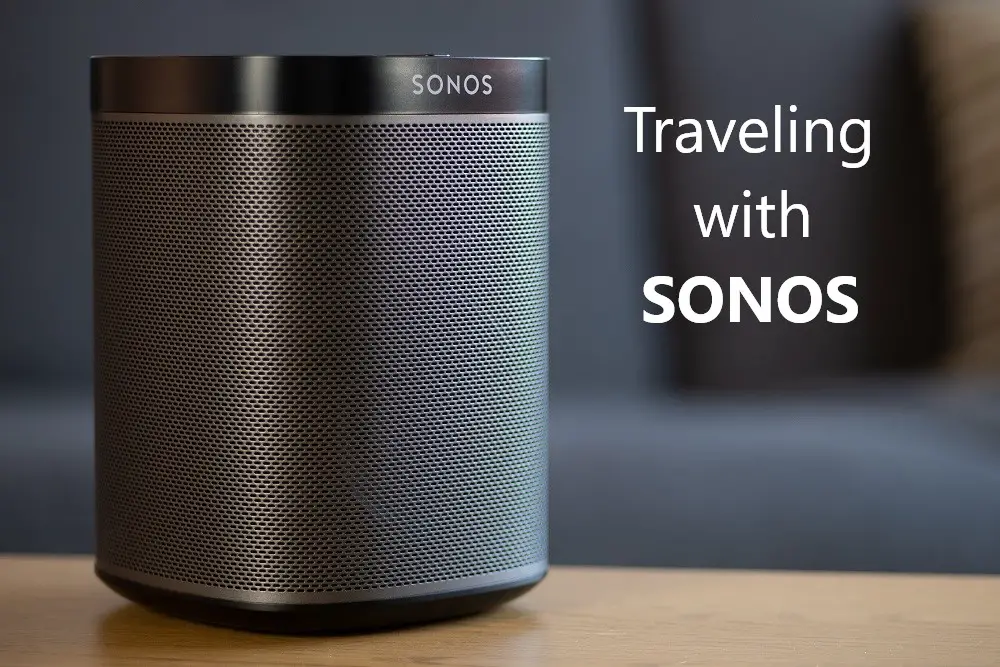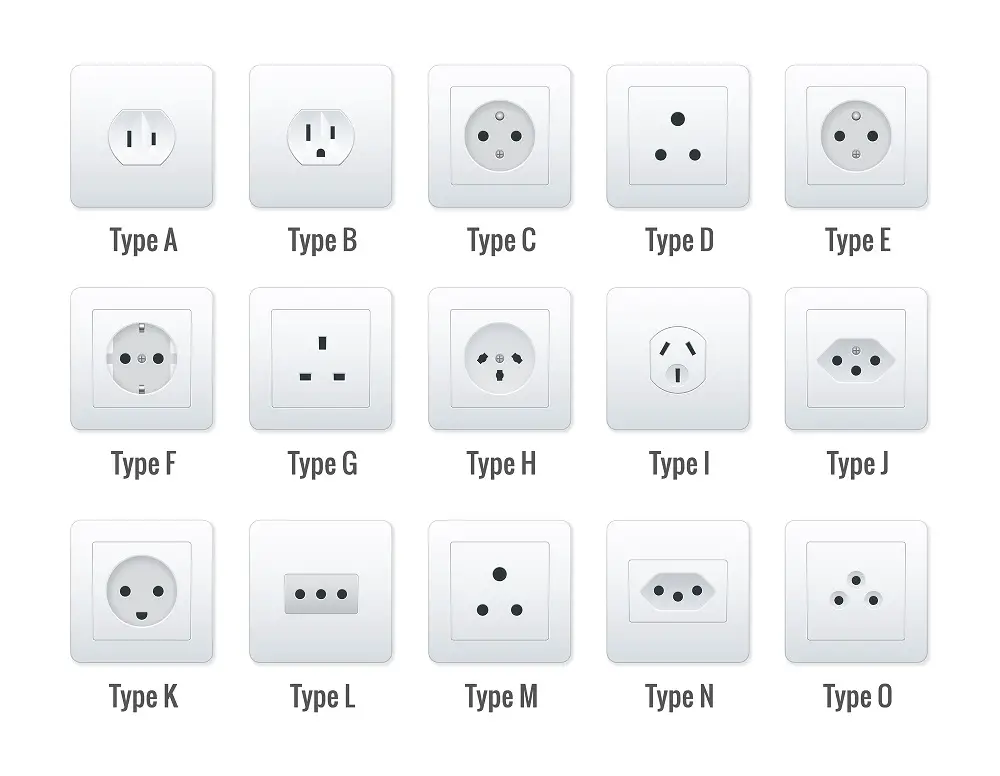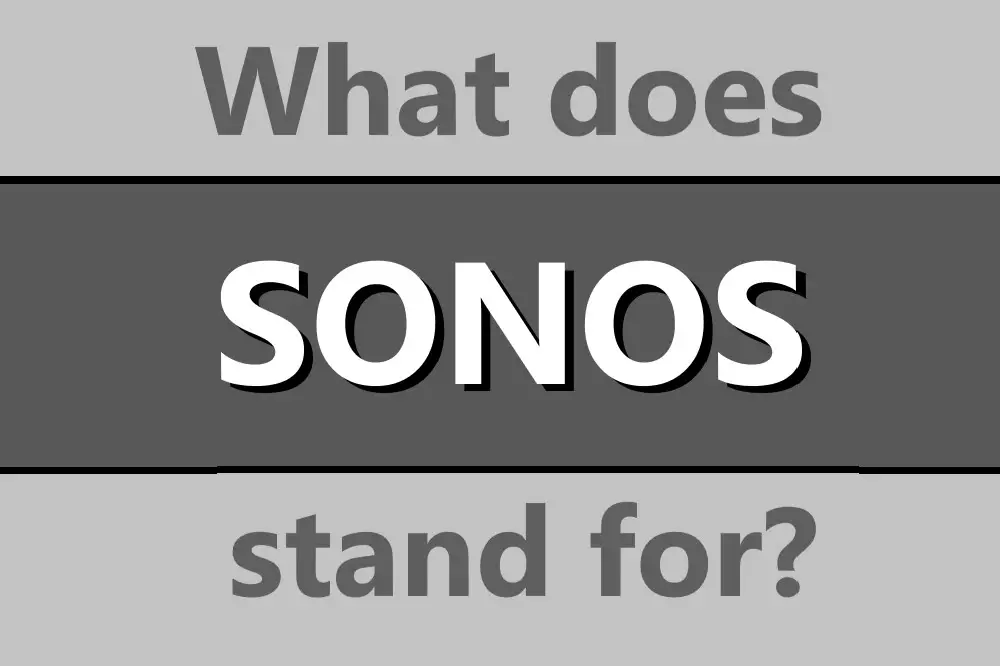Sonos audio devices are known as speakers capable of multi-room music playback, as well as compatibility with smart assistants, as well as support for all the major streaming services.
Many Sonos speakers are portable and sold around the world. But does it mean they are dual voltage?
All Sonos devices except the Connect:Amp are dual voltage and will switch automatically. The Connect:Amp has a voltage switch on it that must be manually changed in order to deal with a changed voltage. You’ll also need to consider getting a plug converter or adapter when traveling.

We’ll explore how the Sonos devices work with different voltages as well as how best to use the devices while traveling so you don’t end up with a smoldering heap of plastic and electronics. We’ll also look at some common plug types and voltages that you’ll encounter while traveling.
Table of Contents
Are Sonos Devices Dual Voltage?
Sonos Devices are dual voltage and no converter or transformer is required for any Sonos product. All devices will work with the common 110 volts and 230 volts power supply found throughout the world, including the Sonos One.
However while these Sonos devices can automatically switch between voltages, this doesn’t mean that you don’t need to buy an adapter. You will still need the correct plug or an adapter for the power plug so that it fits into the actual wall outlets.
This is a great feature as it means you don’t have to carry around bulky power converters with you, especially when traveling when your luggage size may be limited. It also means that you don’t have to worry about your devices not charging even if the plug fits.
Finally, one of the best reasons for having the ability to deal with different voltages is you won’t have to deal with the nasty consequences of a voltage mismatch which is the device possibly getting damaged beyond repair by a power surge.
Connect: Amp Voltage Switch Is Not Automatic
The Sonos Connect: Amp is not an automatic voltage switching device like the rest of the Sonos range but still is dual voltage.
This isn’t a big deal, as the Connect: Amp can still deal with the two main voltages you’ll find around the world but you will still have to toggle the voltage switch before running the power through it.
If you have the switch in the wrong position, when you pump the wrong voltage through the device it will likely cause significant if not permanent damage rendering the unit useless.
One way to avoid this happening is to put a small tag near the plug as a visual reminder. One great way to do this is to use the plastic tags often found on bags of bread to keep in the freshness, as they can clip easily onto a power cord as well as having a space to put writing with a permanent marker.
Otherwise, you can use electrical tape which is also generally a very bright color as the visual prompt.
Sonos Travelling Tips
When traveling across different regions, to best ensure that you have the right setup for the right area, let’s look at the various power setups and configurations around the world.
Sonos in the United States
For every device except the Connect:Amp, you can plug your Sonos device directly in without having to worry about the voltage, which is 120 volts across the continental United States.
For the Connect:Amp, make sure the toggle is to the 120 volts switch before allowing the power to flow.
In regards to plug types, you have the Type A and Type B plug types across the United States, however, for your Sonos device it’s unlikely you’ll be encountering a Type B plug. Type B has the third prong, used as the ground, so you’ll just need the standard 2 prong.
Sonos in Europe
You can expect 230 volts to be the standard voltage across Europe so make sure the Connect:Amp switch is set to that before powering up the device. Beside that, you can use any Sonos directly as long as you have a fitting plug.
Europe mainly has the Type C and Type F plugs, which are similar to the previously mentioned Type A and Type B plugs, with the main difference being that the prongs are round rather than thin and flat.
Another huge difference is in particular between Type F and Type B, which are the plugs with the ability to have a ground or earth.
While the Type B plug uses the third prong, the European style Type F has the addition of top and bottom indentations containing conductive clips in them in order to earth the appliance.
The plug is also not perfectly round with the addition on the left and right of plastic notches to provide extra stability, particularly useful for large and heavy plugs.
However, as is the case with grounded plugs for the United States, you’re unlikely going to need to use the Type F plug with any Sonos device.
Sonos in Asia
There is a lot of variety in plugs and voltages across Asia, so we’ll just look at some of the most populous areas and common tourist destinations. You can always check for yourself on a website like WorldStandards to confirm before you head off overseas.
The People’s Republic of China uses Type A, C, and I. Type I comes in 2- and 3-prong varieties, with the 3-prong being the grounded or earth version. The prongs are two flat blades, forming an upside-down V, as they are offset at 30° to the vertical.
You can expect 220 volts in China, similar to that found in Europe.
Japan instead uses the Type A and Type B plugs and runs at 100 volts, meaning you need to set the switch to the same set as that of the United States on the Connect:Amp.
South Korea uses Type C and F sockets, with 220 volts like China. You can expect that most countries throughout Asia use the 220 volts or similar standards although the plug types may change.
Sonos in South America
Brazil uses the Type C and N plug, the latter being a plug exclusively used in Brazil and South Africa. It consists of two rounded pins with a center grounding pin as well as the base of the pins being covered with insulated sleeves.
You have to be careful where voltage is concerned, as in Brazil more than one voltage is being used. Depending on the region, the city or even the hotel in which you’re staying will influence which voltage you will come across.
You can either expect 127 or 220 volts, and you can’t use your appliances if the local voltage exceeds the maximum voltage of your appliances, which will be on the Sonos device. You will need a voltage converter in this instance.
Amazon stocks a great range of converters, such as the HYTED Travel Adapter and Converter Step Down Voltage 220V to 110V.
Colombia uses the Type A and Type B plugs while using the 110 voltage system.
Argentina uses the Type C and I plugs while using the 220 voltage system. Peru also uses the 220 voltage system, while taking Type A, B, and C plugs.




